






























© Getty Images
0 / 31 Fotos
Jerusalem
- Speak of Jerusalem, and you speak of the Bible. The very heart and soul of the Holy Land, some of the greatest sites in Christendom are located here, places that include Temple Mount (also venerated as a holy site in Judaism and Islam), the Wailing Wall, and the Church of the Holy Sepulcher (pictured), the site of Jesus' crucifixion and his (empty) tomb.
© Shutterstock
1 / 31 Fotos
Lachish
- The once mighty city of Lachish was said to be second only to Jerusalem in terms of power and prestige. The scene of numerous battles, most famously for its siege and conquest by the Neo-Assyrians in 701 BCE, Lachish lies near present-day Lakhish. Pictured are the ruins of the main gate and northern stone wall of this ancient biblical city.
© Shutterstock
2 / 31 Fotos
Megiddo
- Megiddo in northern Israel is forever known by its infamous Greek name Armageddon. An important settlement in the ancient world, Megiddo sat on the trade route linking Egypt with Mesopotamia and Asia Minor. Control of this strategic location was contested many times over. In fact, the city is mentioned no less than six times in the Old Testament, all in relation to various battles.
© Shutterstock
3 / 31 Fotos
Beersheba
- Beersheba, or Beersheva, is the largest city in the Negev desert of southern Israel. The biblical site of Beersheba is Tel Be'er Sheva, mentioned several times in the Hebrew Bible, or Tanakh. The biblical narrative places the city at the time of King David, around 1000 BCE.
© Shutterstock
4 / 31 Fotos
Ein Gedi
- Tranquil Ein Gedi, located west of the Dead Sea, near Masada and the Qumran Caves, is where David hid from King Saul and where he spared his life when he realized Saul was unarmed.
© Shutterstock
5 / 31 Fotos
Dan
- The ancient city of Dan is described in the Hebrew Bible as the northernmost city of the Kingdom of Israel. Tel Dan is the modern Israeli name for the site, now an archaeological attraction set in Tel Dan Nature Reserve.
© Shutterstock
6 / 31 Fotos
Qumran
- Qumran in the West Bank is the settlement nearest to the Qumran Caves where the first of the ancient Hebrew and Aramaic texts known as the Dead Sea Scrolls were hidden and ultimately discovered in the late 1940s.
© Getty Images
7 / 31 Fotos
Tel Hazor
- Tel Hazor in Israel's Upper Galilee is described in the Old Testament as being the site of one of Joshua's key victories in his conquest of Canaan after Moses' death. The ruins are now a key feature of a national park.
© Shutterstock
8 / 31 Fotos
Machaerus
- Machaerus, an ancient hilltop palace and fortress located southwest of Madaba, Jordan, once served as a military base for King Herod the Great. The Bible (and Jewish historian Flavius Josephus) identified the desert stronghold as the site where John the Baptist was imprisoned and executed on the orders of the king's son, Herod Antipas.
© Shutterstock
9 / 31 Fotos
Mount Nebo
- Mount Nebo in Jordan is mentioned in the Bible as the place where Moses was granted a view of the Promised Land before his death. Pictured is the fabulous mosaic decorating the floor of the diaconicon-baptistery in the remains of a Byzantine Church located on the highest point of the mount.
© Shutterstock
10 / 31 Fotos
Petra
- The world-famous city of Petra, carved into the vibrant red rock cliffs of Jebel al-Madhbah, near the Dead Sea in southern Jordan, was known as "Sela" in the Bible. It was likely built circa 312 BCE by the Nabateans, a desert-dwelling Arab tribe.
© Shutterstock
11 / 31 Fotos
Bethsaida
- This is the archaeological site believed to be the place of Bethsaida, on the northern shore of the Sea of Galilee, which was home to Saint Peter. The village saw Jesus perform several memorable miracles. Bethsaida was also the biblical Roman city of Julias.
© Getty Images
12 / 31 Fotos
Sidon
- An ancient port city in south Lebanon, Sidon was important in both the Old and New Testaments for its association with the Canaanites. According to the New Testament, Jesus once preached in Sidon (locally known as Saida). Pictured is the crusader sea castle, dating back to 1228 CE.
© Shutterstock
13 / 31 Fotos
Mount of Olives
- The Mount of Olives east of Jerusalem's Old City is frequently mentioned in the New Testament as the place Jesus stood and wept over the city, an event known as Flevit super illam in Latin. The mount has been used as a Jewish cemetery for over 3,000 years.
© Shutterstock
14 / 31 Fotos
Mount Sinai
- Some scholars suggest that Mount Sinai on the Sinai Peninsula of Egypt is possibly the same location as the biblical Mount Sinai, the place where, according to the Bible and the Quran, Moses received the Ten Commandments.
© Shutterstock
15 / 31 Fotos
Byblos
- Byblos in Lebanon is one of the oldest continuously-inhabited cities in the world, having first been occupied between 8800 and 7000 BCE. The name Byblos is Greek, derived from byblos/byblinos and used to describe papyrus. Hence the English word Bible is derived from byblos as "the (papyrus) book."
© Shutterstock
16 / 31 Fotos
Sea of Galilee
- According to the New Testament, much of the ministry of Jesus takes place on the shores of the Sea of Galilee. Four of Jesus' apostles were recruited here—Andrew, James, John, and Peter, who had all been earning a living by fishing in the area.
© Shutterstock
17 / 31 Fotos
Church of the Nativity
- One of the most revered sites in Christianity, the Church of the Nativity in Bethlehem is said to be the birthplace of Jesus.
© Shutterstock
18 / 31 Fotos
Mount Tabor
- Summiting at 575m (1,886ft) and located in Lower Galilee, Israel, Mount Tabor is the battleground of a fierce clash between the Canaanites and the Israelites. In Christian tradition, Mount Tabor is also the site of the transfiguration of Jesus.
© Shutterstock
19 / 31 Fotos
Valley of Elah
- Tucked under the lower hills of Judea in southern Israel is the Valley of Elah. It's here that Goliath, a colossal figure mentioned in the Book of Samuel, was slain in single combat by the diminutive David using just a slingshot.
© Shutterstock
20 / 31 Fotos
Jordan River
- The Jordan River holds major significance in Judaism and Christianity. According to the Bible, the Israelites crossed it into the Promised Land, and Jesus of Nazareth was baptized by John the Baptist in its muddy waters.
© Shutterstock
21 / 31 Fotos
Bethany beyond the Jordan
- Located on the east bank of the Jordan River is Al-Maghtas, better known as Bethany beyond the Jordan and considered to be the original location of the Baptism of Jesus by John the Baptist. Over the centuries, the river has changed its course, and the water that nourishes the location is today little more than a trickle.
© Shutterstock
22 / 31 Fotos
Mount Sodom
- Taking its name from the legendary city of Sodom, whose destruction along with Gomorrah is the subject of a narrative in the Bible, Mount Sodom is made up almost entirely of rock salt. It stands along the southwestern part of the Dead Sea in Israel.
© Shutterstock
23 / 31 Fotos
Capernaum
- The fishing village of Capernaum located on the northern shore of the Sea of Galilee is cited in all four gospels. It was believed to be the hometown of Mathew, and where Peter once lived.
© Shutterstock
24 / 31 Fotos
Church of Annunciation
- The modern-day Church of Annunciation in Nazareth is established over what Catholic tradition holds to be the site of the house of the Virgin Mary. Here, it is believed, the archangel Gabriel told the young Mary that she would become the mother of the Son of God.
© Shutterstock
25 / 31 Fotos
Mount of Beatitudes
- The Mount of Beatitudes in northern Israel is believed to be where Jesus preached the Sermon on the Mount. The Roman Catholic Franciscan chapel marking the summit was built in 1937-38 and welcomed Pope John Paul II in March 2000.
© Shutterstock
26 / 31 Fotos
Tabgha
- Tabgha, an area situated on the north-western shore of the Sea of Galilee in Israel, is said to be the site of the miracle of the multiplication of the loaves and fishes, the so-called Feeding of the 5,000.
© Shutterstock
27 / 31 Fotos
Mount Zion
- Important sites on Mount Zion in Jerusalem include the Abbey of Dormition (pictured)—said to mark the spot where Mary, mother of Jesus, died—and King David's Tomb. The Cenacle, better known as the Room of the Last Supper, is also located here.
© Shutterstock
28 / 31 Fotos
Via Dolorosa
- The Via Dolorosa, which in Latin means the "Sorrowful Way," is a processional route in Old Jerusalem that represents the path Jesus would have taken under escort by Roman soldiers on the way to his crucifixion. The byway is marked by nine Stations of the Cross.
© Shutterstock
29 / 31 Fotos
Rome
- The powerful Roman Empire controlled Judea with an iron grip, and persecuted early Christians with alarming zeal. Both Peter the Apostle and Paul the Apostle were martyred in the city. Ironically, Rome is where the Christian church first gained a powerful foothold. Sources: (Biblical Archaeology Society) (The Bible Journey) (NPR) See also: These parts of the Bible were confirmed by science
© Shutterstock
30 / 31 Fotos
© Getty Images
0 / 31 Fotos
Jerusalem
- Speak of Jerusalem, and you speak of the Bible. The very heart and soul of the Holy Land, some of the greatest sites in Christendom are located here, places that include Temple Mount (also venerated as a holy site in Judaism and Islam), the Wailing Wall, and the Church of the Holy Sepulcher (pictured), the site of Jesus' crucifixion and his (empty) tomb.
© Shutterstock
1 / 31 Fotos
Lachish
- The once mighty city of Lachish was said to be second only to Jerusalem in terms of power and prestige. The scene of numerous battles, most famously for its siege and conquest by the Neo-Assyrians in 701 BCE, Lachish lies near present-day Lakhish. Pictured are the ruins of the main gate and northern stone wall of this ancient biblical city.
© Shutterstock
2 / 31 Fotos
Megiddo
- Megiddo in northern Israel is forever known by its infamous Greek name Armageddon. An important settlement in the ancient world, Megiddo sat on the trade route linking Egypt with Mesopotamia and Asia Minor. Control of this strategic location was contested many times over. In fact, the city is mentioned no less than six times in the Old Testament, all in relation to various battles.
© Shutterstock
3 / 31 Fotos
Beersheba
- Beersheba, or Beersheva, is the largest city in the Negev desert of southern Israel. The biblical site of Beersheba is Tel Be'er Sheva, mentioned several times in the Hebrew Bible, or Tanakh. The biblical narrative places the city at the time of King David, around 1000 BCE.
© Shutterstock
4 / 31 Fotos
Ein Gedi
- Tranquil Ein Gedi, located west of the Dead Sea, near Masada and the Qumran Caves, is where David hid from King Saul and where he spared his life when he realized Saul was unarmed.
© Shutterstock
5 / 31 Fotos
Dan
- The ancient city of Dan is described in the Hebrew Bible as the northernmost city of the Kingdom of Israel. Tel Dan is the modern Israeli name for the site, now an archaeological attraction set in Tel Dan Nature Reserve.
© Shutterstock
6 / 31 Fotos
Qumran
- Qumran in the West Bank is the settlement nearest to the Qumran Caves where the first of the ancient Hebrew and Aramaic texts known as the Dead Sea Scrolls were hidden and ultimately discovered in the late 1940s.
© Getty Images
7 / 31 Fotos
Tel Hazor
- Tel Hazor in Israel's Upper Galilee is described in the Old Testament as being the site of one of Joshua's key victories in his conquest of Canaan after Moses' death. The ruins are now a key feature of a national park.
© Shutterstock
8 / 31 Fotos
Machaerus
- Machaerus, an ancient hilltop palace and fortress located southwest of Madaba, Jordan, once served as a military base for King Herod the Great. The Bible (and Jewish historian Flavius Josephus) identified the desert stronghold as the site where John the Baptist was imprisoned and executed on the orders of the king's son, Herod Antipas.
© Shutterstock
9 / 31 Fotos
Mount Nebo
- Mount Nebo in Jordan is mentioned in the Bible as the place where Moses was granted a view of the Promised Land before his death. Pictured is the fabulous mosaic decorating the floor of the diaconicon-baptistery in the remains of a Byzantine Church located on the highest point of the mount.
© Shutterstock
10 / 31 Fotos
Petra
- The world-famous city of Petra, carved into the vibrant red rock cliffs of Jebel al-Madhbah, near the Dead Sea in southern Jordan, was known as "Sela" in the Bible. It was likely built circa 312 BCE by the Nabateans, a desert-dwelling Arab tribe.
© Shutterstock
11 / 31 Fotos
Bethsaida
- This is the archaeological site believed to be the place of Bethsaida, on the northern shore of the Sea of Galilee, which was home to Saint Peter. The village saw Jesus perform several memorable miracles. Bethsaida was also the biblical Roman city of Julias.
© Getty Images
12 / 31 Fotos
Sidon
- An ancient port city in south Lebanon, Sidon was important in both the Old and New Testaments for its association with the Canaanites. According to the New Testament, Jesus once preached in Sidon (locally known as Saida). Pictured is the crusader sea castle, dating back to 1228 CE.
© Shutterstock
13 / 31 Fotos
Mount of Olives
- The Mount of Olives east of Jerusalem's Old City is frequently mentioned in the New Testament as the place Jesus stood and wept over the city, an event known as Flevit super illam in Latin. The mount has been used as a Jewish cemetery for over 3,000 years.
© Shutterstock
14 / 31 Fotos
Mount Sinai
- Some scholars suggest that Mount Sinai on the Sinai Peninsula of Egypt is possibly the same location as the biblical Mount Sinai, the place where, according to the Bible and the Quran, Moses received the Ten Commandments.
© Shutterstock
15 / 31 Fotos
Byblos
- Byblos in Lebanon is one of the oldest continuously-inhabited cities in the world, having first been occupied between 8800 and 7000 BCE. The name Byblos is Greek, derived from byblos/byblinos and used to describe papyrus. Hence the English word Bible is derived from byblos as "the (papyrus) book."
© Shutterstock
16 / 31 Fotos
Sea of Galilee
- According to the New Testament, much of the ministry of Jesus takes place on the shores of the Sea of Galilee. Four of Jesus' apostles were recruited here—Andrew, James, John, and Peter, who had all been earning a living by fishing in the area.
© Shutterstock
17 / 31 Fotos
Church of the Nativity
- One of the most revered sites in Christianity, the Church of the Nativity in Bethlehem is said to be the birthplace of Jesus.
© Shutterstock
18 / 31 Fotos
Mount Tabor
- Summiting at 575m (1,886ft) and located in Lower Galilee, Israel, Mount Tabor is the battleground of a fierce clash between the Canaanites and the Israelites. In Christian tradition, Mount Tabor is also the site of the transfiguration of Jesus.
© Shutterstock
19 / 31 Fotos
Valley of Elah
- Tucked under the lower hills of Judea in southern Israel is the Valley of Elah. It's here that Goliath, a colossal figure mentioned in the Book of Samuel, was slain in single combat by the diminutive David using just a slingshot.
© Shutterstock
20 / 31 Fotos
Jordan River
- The Jordan River holds major significance in Judaism and Christianity. According to the Bible, the Israelites crossed it into the Promised Land, and Jesus of Nazareth was baptized by John the Baptist in its muddy waters.
© Shutterstock
21 / 31 Fotos
Bethany beyond the Jordan
- Located on the east bank of the Jordan River is Al-Maghtas, better known as Bethany beyond the Jordan and considered to be the original location of the Baptism of Jesus by John the Baptist. Over the centuries, the river has changed its course, and the water that nourishes the location is today little more than a trickle.
© Shutterstock
22 / 31 Fotos
Mount Sodom
- Taking its name from the legendary city of Sodom, whose destruction along with Gomorrah is the subject of a narrative in the Bible, Mount Sodom is made up almost entirely of rock salt. It stands along the southwestern part of the Dead Sea in Israel.
© Shutterstock
23 / 31 Fotos
Capernaum
- The fishing village of Capernaum located on the northern shore of the Sea of Galilee is cited in all four gospels. It was believed to be the hometown of Mathew, and where Peter once lived.
© Shutterstock
24 / 31 Fotos
Church of Annunciation
- The modern-day Church of Annunciation in Nazareth is established over what Catholic tradition holds to be the site of the house of the Virgin Mary. Here, it is believed, the archangel Gabriel told the young Mary that she would become the mother of the Son of God.
© Shutterstock
25 / 31 Fotos
Mount of Beatitudes
- The Mount of Beatitudes in northern Israel is believed to be where Jesus preached the Sermon on the Mount. The Roman Catholic Franciscan chapel marking the summit was built in 1937-38 and welcomed Pope John Paul II in March 2000.
© Shutterstock
26 / 31 Fotos
Tabgha
- Tabgha, an area situated on the north-western shore of the Sea of Galilee in Israel, is said to be the site of the miracle of the multiplication of the loaves and fishes, the so-called Feeding of the 5,000.
© Shutterstock
27 / 31 Fotos
Mount Zion
- Important sites on Mount Zion in Jerusalem include the Abbey of Dormition (pictured)—said to mark the spot where Mary, mother of Jesus, died—and King David's Tomb. The Cenacle, better known as the Room of the Last Supper, is also located here.
© Shutterstock
28 / 31 Fotos
Via Dolorosa
- The Via Dolorosa, which in Latin means the "Sorrowful Way," is a processional route in Old Jerusalem that represents the path Jesus would have taken under escort by Roman soldiers on the way to his crucifixion. The byway is marked by nine Stations of the Cross.
© Shutterstock
29 / 31 Fotos
Rome
- The powerful Roman Empire controlled Judea with an iron grip, and persecuted early Christians with alarming zeal. Both Peter the Apostle and Paul the Apostle were martyred in the city. Ironically, Rome is where the Christian church first gained a powerful foothold. Sources: (Biblical Archaeology Society) (The Bible Journey) (NPR) See also: These parts of the Bible were confirmed by science
© Shutterstock
30 / 31 Fotos
Following the footsteps of Jesus: Biblical sites you can still visit
Places to explore that are mentioned in the Bible
© Getty Images
The Bible narrative is set in numerous destinations throughout the Holy Land, and beyond. Some of these places remain as historic cities and serve as major tourist destinations. But there are lots of other towns and villages associated with these ancient religious texts that are equally important but far less visited. And in order to better understand the writings in the Bible, they should be explored.
Click through and discover biblical sites you can still visit.
RECOMMENDED FOR YOU








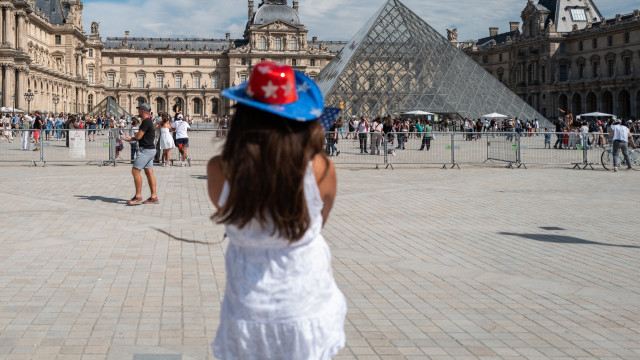


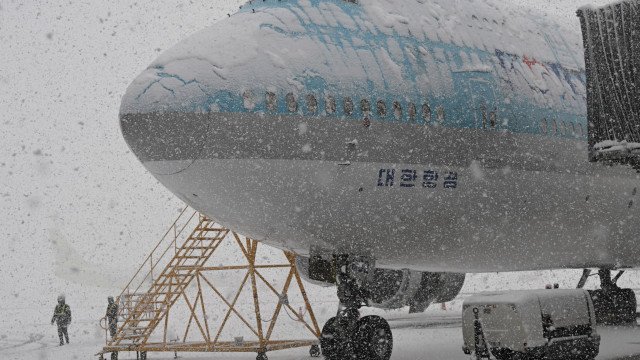
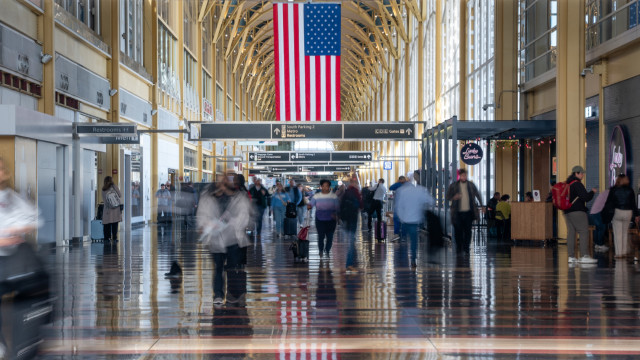
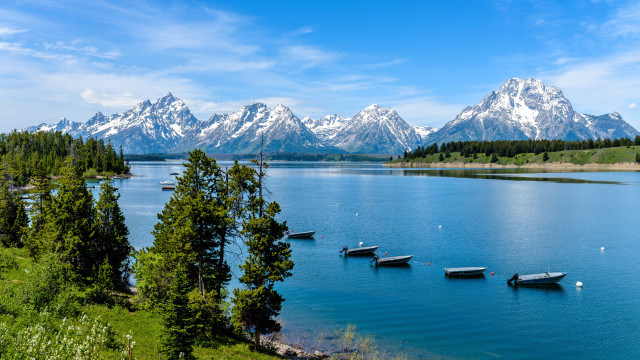




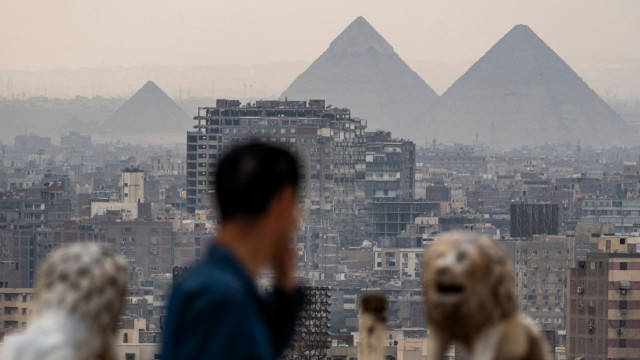

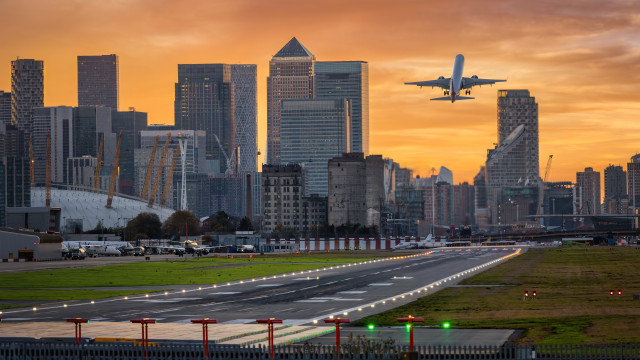
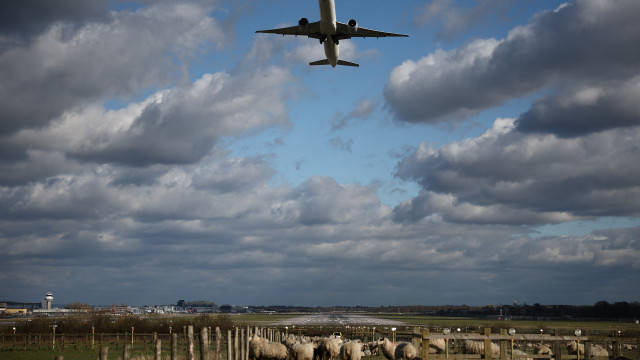




MOST READ
- Last Hour
- Last Day
- Last Week








